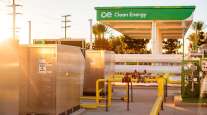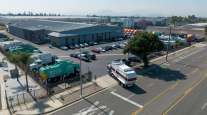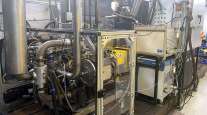Opinion: Natural Gas — Proceed, But With Caution
By Fred Krupp
President
Environmental Defense Fund
This Opinion piece appears in the Dec. 24 & 31 print edition of Transport Topics. Click here to subscribe today.
There’s nothing better than win-win solutions, and the Environmental Defense Fund has worked with leading companies over the years to find scores of them. We have partnered with many companies in the trucking and transportation sector, including Cummins, Caterpillar, FedEx and UPS and helped craft standards that are reducing emissions from heavy-duty diesel engines by more than 90%.
America’s natural-gas boom has the potential to be another big win — if we work together to do it the right way. But if we don’t get it right, substituting natural gas for diesel in our longhaul trucking fleet could just as easily become a losing proposition for everyone concerned.
We all know the pitch for natural gas-powered trucks: A secure, domestic fuel supply with lower, more predictable costs than diesel, and easier on the environment, too. Natural-gas trucks have already developed considerable market momentum, with new heavy-duty engines in the works and many light- and medium-duty natural-gas vehicles already plying U.S. roads in transit, municipal and other fleets.
Building out the fleets and infrastructure for regional and longhaul natural-gas trucking will be complicated and capital-intensive. Time and money on this scale equals substantial business risk, so you want to proceed with caution. Natural gas could very well be the opportunity we’re all looking for, but there are some big questions that need to be addressed first. Nobody wants to end up taking an expensive ride down a dead-end street.
Today’s diesel-emissions standards have effectively eliminated the advantage natural gas once had in terms of sulfur, nitrogen or particulates. But running on natural gas releases about 25% less carbon dioxide than diesel. Carbon dioxide, of course, is a greenhouse gas and a major contributor to global warming.
But the carbon advantage of natural-gas engines could be wiped out if we’re not careful. Why? Because natural gas — specifically unburned methane — is itself an enormously potent greenhouse gas when it leaks into the atmosphere. Ounce for ounce, methane is 72 times more powerful than carbon dioxide over 20 years.
These fugitive emissions of natural gas occur throughout the natural-gas supply chain, from the wellhead to the fuel pump. Unless we take steps to measure and reduce them, natural-gas engines could very well be much worse for our climate than diesel.
So how do we keep the potential blessings of natural gas from becoming a curse? It all comes down to a number: 1%. That’s the total amount of methane, scientists say, we can afford to let escape systemwide before the environmental costs start to outweigh the benefits.
Estimates of how much is escaping now are all over the map. The truth is, nobody knows. That’s why EDF is working with the gas industry and engine makers to figure out the real scope of the problem and find the best ways to solve it. According to government estimates, the current systemwide emissions for natural gas used in trucks is 2.5%. Some say it’s lower, others say higher.
We do know that every ounce of natural gas that escapes wastes a valuable domestic fuel and undermines the environmental benefits.
As a matter of principle, EDF cannot endorse natural gas as a road fuel until we know that overall fugitive emissions are less than 1%. And, as somebody who has been down these roads before, I’d urge the industry not to rush in either until we know the whole story.
There’s an obvious desire to talk about going green with natural gas. Your public relations team probably has the talking points already. But a lot of folks out there will react badly if the promise turns out not to be true, which means there’s a risk to your corporate reputation.
We at EDF aren’t the only ones concerned about this. We’ve heard from companies in your industry that are worried they might end up holding the bag if this isn’t solved before moving forward. And if your competitors are concerned, you probably should be, too.
The good news is, there are lots of ways for us to get down to that 1%. Remember, we’re talking about saving a valuable product, which helps the math. And the responsibility here shouldn’t fall on end-users alone. It is going to take a systemwide approach, and we think many of the solutions lie upstream of the truck.
There’s a coalition coming together to measure and reduce fugitive emissions from the natural-gas system, and we need the trucking industry to be part of it.
So let me hear from you at fkrupp@edf.org. Join our coalition and help us get to the bottom of these questions. Help us get the answers right. And the next time somebody from the gas industry comes knocking, ask them what they’re doing to get this right.
Natural-gas trucks can help drive us to a safer, more prosperous future. If we get this right, it’s a huge opportunity for your businesses and for our country. We sincerely want to work together with you and for you to work with the gas industry to help make this the win-win it has the potential to become.
The nonprofit Environmental Defense Fund, New York, works with industry to address energy and environmental challenges. This article is based on the author’s speech at American Trucking Associations’ Summit on Natural Gas in Trucking in November.




